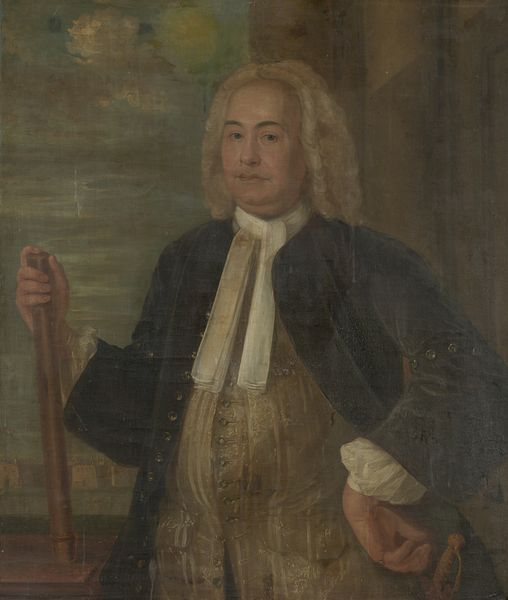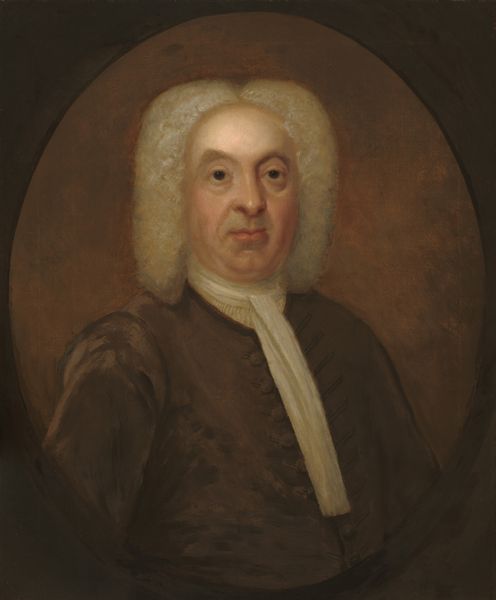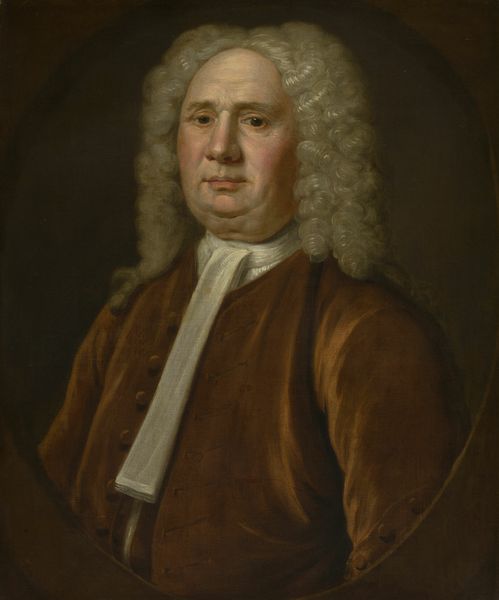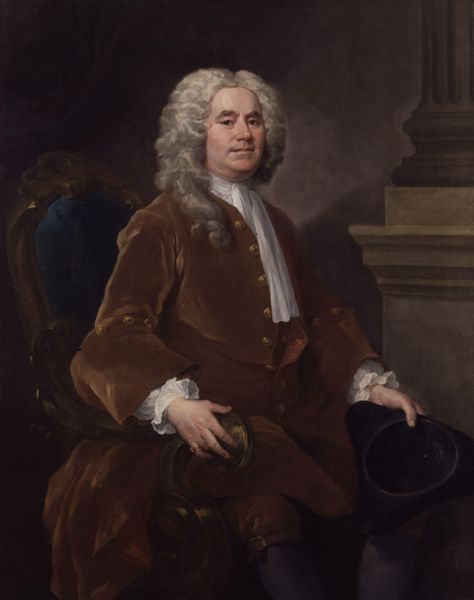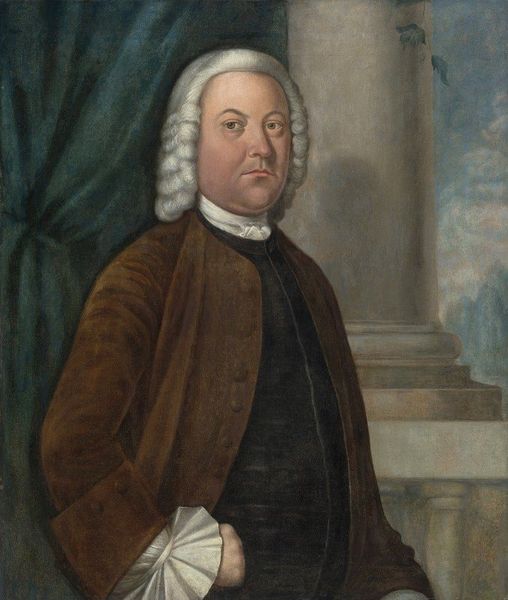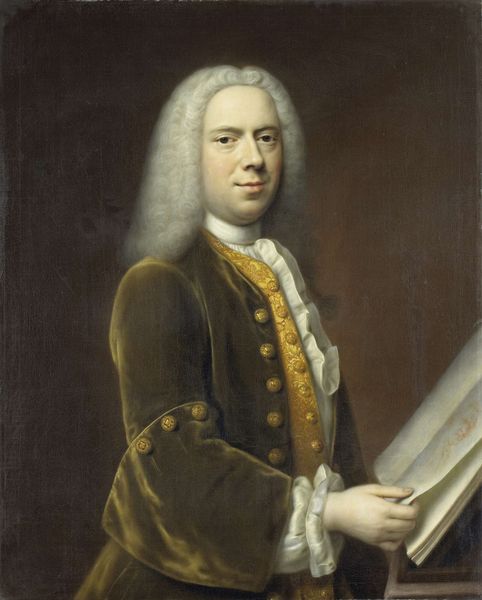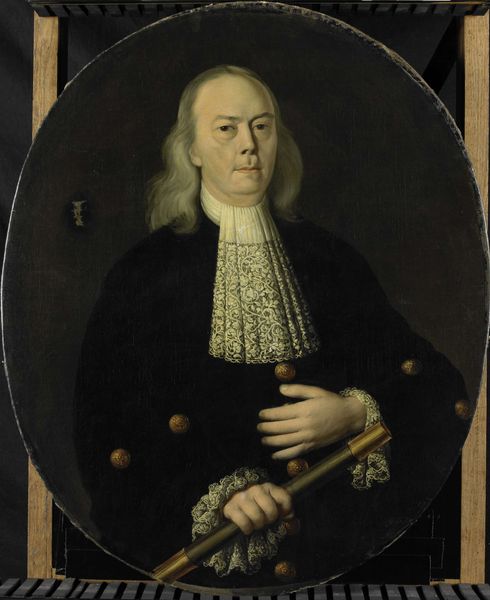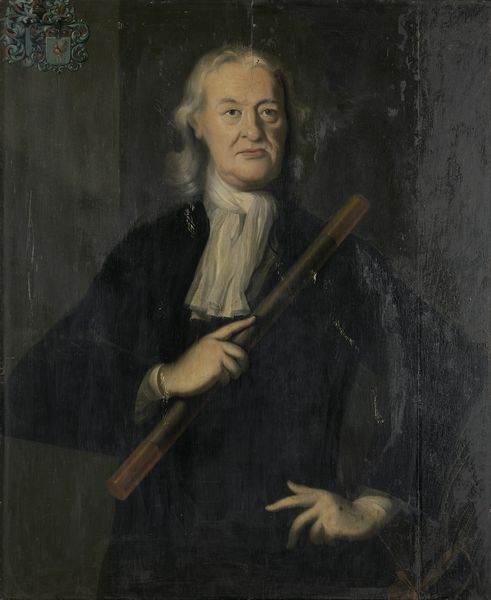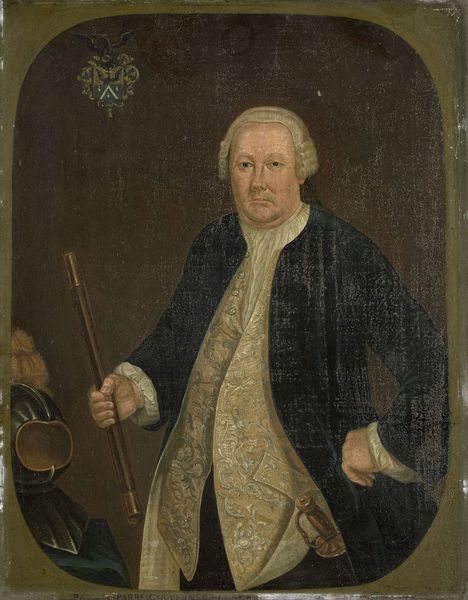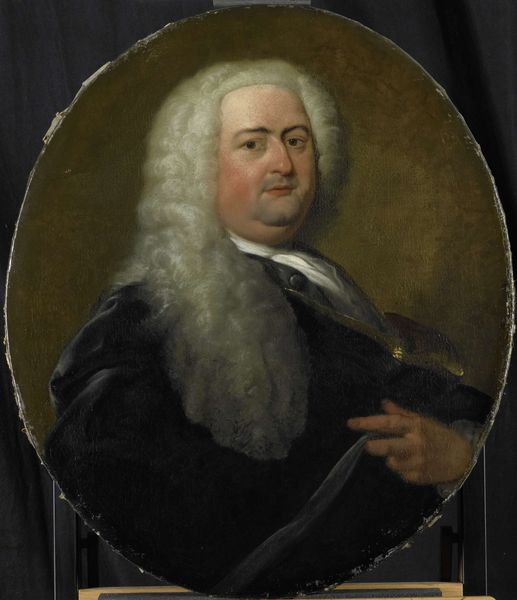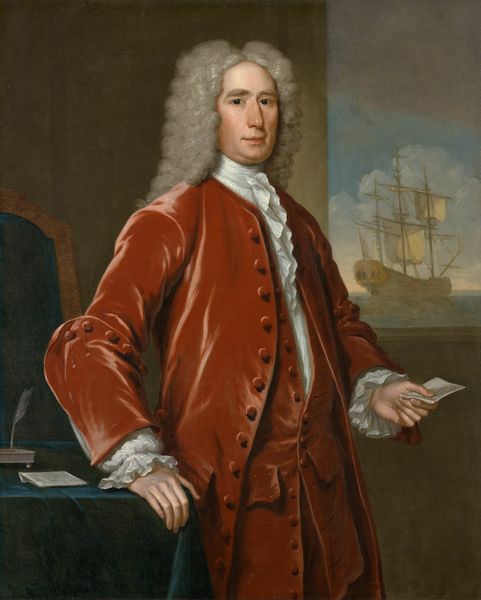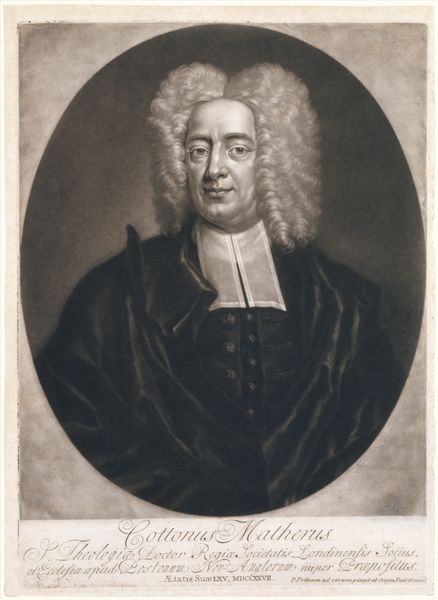
oil-paint
#
portrait
#
baroque
#
oil-paint
#
oil painting
#
history-painting
Dimensions: height 102.5 cm, width 85.5 cm
Copyright: Rijks Museum: Open Domain
Theodorus Justinus Rheen painted this oil on canvas portrait of Adriaan Valckenier between 1737 and 1741. Rheen’s application of oil paint shows mastery, skillfully capturing the textures of fabrics and the subtle nuances of skin tones. The use of oil paint itself reflects a complex web of trade and industry of the 18th century. Pigments were sourced globally, and the canvas was meticulously woven, stretched, and prepared. Rheen likely employed apprentices in his studio, each contributing specialized labor to the painting's production. The very act of painting serves as a visual record of both the artist's labor and Valckenier’s status. The portrait commemorates a man who was a high-ranking official in the Dutch East India Company, itself a vast enterprise dependent on global trade, resource extraction, and a complex social hierarchy. In these ways, the painting connects the intimacy of portraiture to the dynamics of global capitalism.
Comments
rijksmuseum about 2 years ago
⋮
The highest-ranking Dutch East India Company (VOC) official in Asia was the governor-general. He presided in the Castle of Batavia (now Jakarta, Indonesia), a fort built by the Dutch. The assembly hall in the Castle of Batavia was the centre of Dutch power in Asia. The walls were hung with portraits of all of the governors-general. Most of the 18th-century examples shown here were painted in Asia, often by anony¬mous artists.
Join the conversation
Join millions of artists and users on Artera today and experience the ultimate creative platform.
